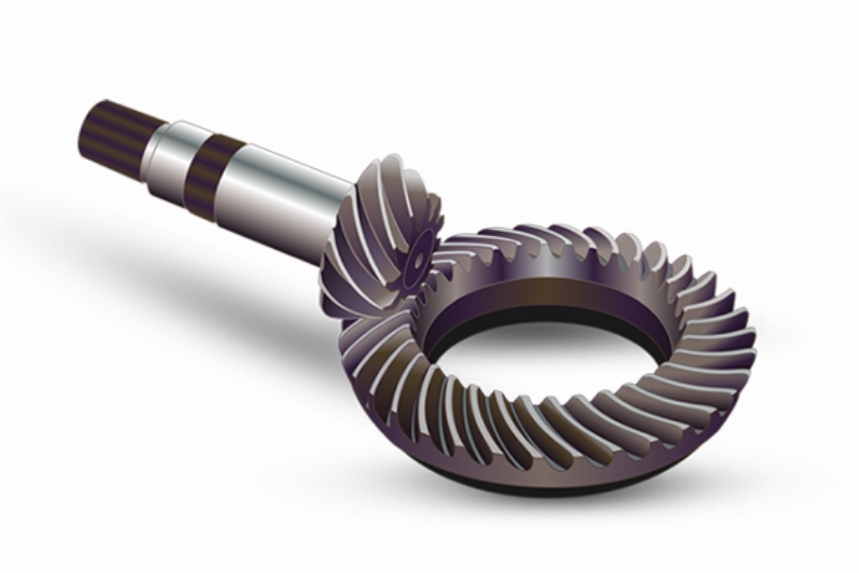Spiral bevel gears are increasingly integral in robotics, particularly for enhancing movement control in robotic systems. Their unique design enables efficient transmission of power at various angles and rotations, crucial for achieving precise and dynamic movement in robots. Here’s how spiral bevel gears are utilized to enhance movement control in robotics:

1. Precision and Efficiency in Motion Transfer
- Angular Transmission: Spiral bevel gears are ideal for transferring motion and power between intersecting shafts at an angle, typically 90 degrees, which is common in robotic arms and joint mechanisms. This capability is essential for creating compact and flexible joint arrangements in robots.
- Smooth Operation: The curved teeth of spiral bevel gears engage more gradually and smoothly than straight-cut gears, leading to less vibration and noise during operation. This smoother engagement is crucial for robots requiring high precision and stability in their movements.
2. High Load Capacity and Compact Design
- Durability Under High Loads: The geometry of spiral bevel gears, with teeth that are curved and oblique, allows for a larger contact surface, which distributes the loads more evenly across the gear teeth. This enhances their ability to handle high torques and loads without failure, an essential feature for heavy-duty robotic applications.
- Space Efficiency: Spiral bevel gears enable more compact gearbox designs compared to other types of gears. This compactness is advantageous in robotics, where space and weight are critical factors influencing the design and functionality of robots.
3. Enhanced Control and Responsiveness
- Variable Speed and Torque: By designing gear ratios appropriately, spiral bevel gears can effectively control the speed and torque of robotic movements, providing precise control over limb positioning, speed, and force, which is particularly valuable in applications like surgical robots or assembly robots in manufacturing.
- Feedback Integration: Robotics often utilize sensors and encoders that work in conjunction with gear systems to provide feedback on position, speed, and torque. Spiral bevel gears’ reliable and precise performance makes them suitable for such integrated control systems, enhancing the robot’s responsiveness and adaptability to dynamic environments.
4. Versatility in Applications
- Multidirectional Movement: Robots require multidirectional movement capabilities, especially in complex environments or when performing tasks such as assembly, painting, or surgery. Spiral bevel gears facilitate this by allowing power transmission in different planes and directions, supporting complex and fluid robotic motions.
- Customization Potential: The ability to customize spiral bevel gears in terms of size, material, and tooth design makes them particularly useful in robotics, where specific performance characteristics are often needed.
5. Improved Longevity and Maintenance
- Reduced Wear and Maintenance: The smooth engagement and efficient load distribution of spiral bevel gears reduce wear and tear, extending the lifespan of robotic mechanisms and decreasing maintenance frequency and costs. This reliability is critical in robotics, where downtime can be costly and disruptive.
- Lubrication Efficiency: Proper lubrication of spiral bevel gears in robotic systems is essential for maintaining their performance and longevity. Advances in lubrication materials and systems, including synthetic and bio-based lubricants, ensure that these gears operate smoothly under continuous use.
6. Integration with Advanced Manufacturing Techniques
- Additive Manufacturing: The integration of additive manufacturing techniques allows for the production of optimized spiral bevel gears with complex designs not possible with traditional manufacturing methods. This is particularly useful for producing lightweight gears with tailored properties for specific robotic applications.
Utilizing spiral bevel gears in robotics enhances not just the precision and efficiency of movement but also contributes significantly to the overall robustness, reliability, and functionality of robotic systems. As robotics technology advances, the role of sophisticated mechanical components like spiral bevel gears will continue to grow, directly impacting the performance and capabilities of future robotic systems.
